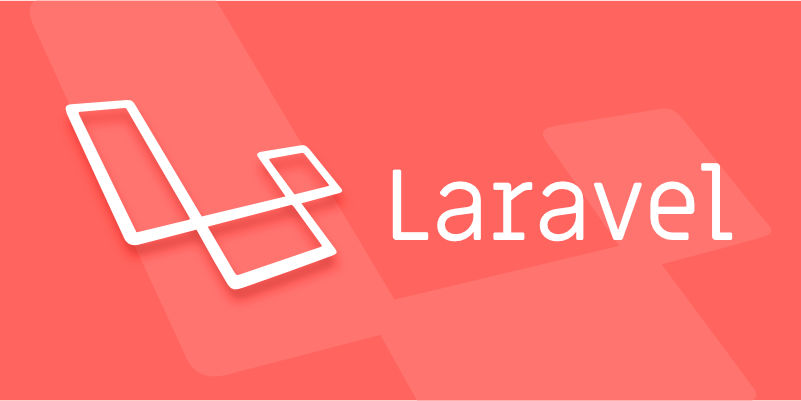The key to defining model relationships using Eloquent ORM in Laravel is to understand common relationship types and set them correctly. 1. Common relationships include one-to-one, one-to-many, belongsToMany, far-level one-to-many (hasMany) and polymorphic relationships; 2. One-to-many relationships are defined by the hasMany method, and the primary key id is matched by the default to the foreign key user_id, and foreign keys can also be specified manually; 3. Many-to-many relationships require intermediate tables and are defined by belongsToMany, which can specify intermediate table names and load additional fields withPivot; 4. Use with() to preload to avoid N 1 query problems, and support nested loading and conditional loading.

In Laravel, Eloquent ORM provides a very convenient way to handle relationships between database models. Once these relationships are defined, you can easily access the associated data without writing complex query statements. The key is to understand several common relationship types and set them correctly in the model.

1. Understand common Eloquent relationship types
Laravel supports relationships between multiple models, and the most commonly used are the following:

- One to One : For example, a user has a mobile phone number.
- One To Many : For example, a user can have multiple orders.
- Many to many : For example, there is a many-to-many relationship between a user and a role. A user can have multiple roles, and a role can also be assigned to multiple users.
- Has Many Through : For example, the user can obtain the comment content of all his orders.
- Polymorphic Relations : used in situations where a model can belong to multiple other models, such as comments can belong to articles or videos.
Each relationship has the corresponding Eloquent method to define, such as hasOne , hasMany , belongsToMany , etc.
2. How to define a "one-to-many" relationship?
This is one of the most common relationships. Suppose you have two models: User and Post, and one user can publish multiple articles.

Add the following method to the User model:
public function posts()
{
return $this->hasMany(Post::class);
}By default, Laravel automatically uses the user's primary key id to match the user_id field in the post table. If your data table fields are different, you can specify it manually:
return $this->hasMany(Post::class, 'user_id_foreign');
Then you can call it like this:
$user = User::find(1);
foreach ($user->posts as $post) {
echo $post->title;
}3. Pay attention to the intermediate table when defining a "many-to-many" relationship
Taking users and roles as examples, you need three tables: users, roles, and role_user (intermediate table).
Defined in the User model:
public function roles()
{
return $this->belongsToMany(Role::class);
}Similarly, the default intermediate table is spliced ??alphabetically (role_user). If not, you can pass in parameters to specify:
return $this->belongsToMany(Role::class, 'user_role');
If your intermediate table has additional fields, such as created_at or other information, you can load these fields through withPivot :
return $this->belongsToMany(Role::class)->withPivot('created_at');
4. Use with() to preload to avoid N 1 query problems
When you loop through a model and access its relationship, if no preloading is done, each loop initiates a new query. This can lead to performance degradation.
The correct way to do this is to use with() when querying:
$users = User::with('posts')->get();
foreach ($users as $user) {
foreach ($user->posts as $post) {
// No additional queries are generated here}
}You can also nest loading:
User::with('posts.comments')->get();
Or loading with conditions:
User::with(['posts' => function($query) {
$query->where('published', true);
}])->get();Basically that's it. The key to defining an Eloquent relationship is to understand the logical structure between models and then select appropriate methods and parameters to express it. Although it may be a bit confusing at the beginning, you will find that it greatly simplifies database operations after getting familiar with it.
The above is the detailed content of How to Define Eloquent Relationships in Laravel?. For more information, please follow other related articles on the PHP Chinese website!

Hot AI Tools

Undress AI Tool
Undress images for free

Undresser.AI Undress
AI-powered app for creating realistic nude photos

AI Clothes Remover
Online AI tool for removing clothes from photos.

Clothoff.io
AI clothes remover

Video Face Swap
Swap faces in any video effortlessly with our completely free AI face swap tool!

Hot Article

Hot Tools

Notepad++7.3.1
Easy-to-use and free code editor

SublimeText3 Chinese version
Chinese version, very easy to use

Zend Studio 13.0.1
Powerful PHP integrated development environment

Dreamweaver CS6
Visual web development tools

SublimeText3 Mac version
God-level code editing software (SublimeText3)

Hot Topics
 What are policies in Laravel, and how are they used?
Jun 21, 2025 am 12:21 AM
What are policies in Laravel, and how are they used?
Jun 21, 2025 am 12:21 AM
InLaravel,policiesorganizeauthorizationlogicformodelactions.1.Policiesareclasseswithmethodslikeview,create,update,anddeletethatreturntrueorfalsebasedonuserpermissions.2.Toregisterapolicy,mapthemodeltoitspolicyinthe$policiesarrayofAuthServiceProvider.
 How do I create new records in the database using Eloquent?
Jun 14, 2025 am 12:34 AM
How do I create new records in the database using Eloquent?
Jun 14, 2025 am 12:34 AM
To create new records in the database using Eloquent, there are four main methods: 1. Use the create method to quickly create records by passing in the attribute array, such as User::create(['name'=>'JohnDoe','email'=>'john@example.com']); 2. Use the save method to manually instantiate the model and assign values ??to save one by one, which is suitable for scenarios where conditional assignment or extra logic is required; 3. Use firstOrCreate to find or create records based on search conditions to avoid duplicate data; 4. Use updateOrCreate to find records and update, if not, create them, which is suitable for processing imported data, etc., which may be repetitive.
 What is the purpose of the artisan command-line tool in Laravel?
Jun 13, 2025 am 11:17 AM
What is the purpose of the artisan command-line tool in Laravel?
Jun 13, 2025 am 11:17 AM
Artisan is a command line tool of Laravel to improve development efficiency. Its core functions include: 1. Generate code structures, such as controllers, models, etc., and automatically create files through make: controller and other commands; 2. Manage database migration and fill, use migrate to run migration, and db:seed to fill data; 3. Support custom commands, such as make:command creation command class to implement business logic encapsulation; 4. Provide debugging and environment management functions, such as key:generate to generate keys, and serve to start the development server. Proficiency in using Artisan can significantly improve Laravel development efficiency.
 How do I install Laravel on my operating system (Windows, macOS, Linux)?
Jun 19, 2025 am 12:31 AM
How do I install Laravel on my operating system (Windows, macOS, Linux)?
Jun 19, 2025 am 12:31 AM
Yes,youcaninstallLaravelonanyoperatingsystembyfollowingthesesteps:1.InstallPHPandrequiredextensionslikembstring,openssl,andxmlusingtoolslikeXAMPPonWindows,HomebrewonmacOS,oraptonLinux;2.InstallComposer,usinganinstalleronWindowsorterminalcommandsonmac
 How do I define methods (actions) in a controller?
Jun 14, 2025 am 12:38 AM
How do I define methods (actions) in a controller?
Jun 14, 2025 am 12:38 AM
Defining a method (also known as an action) in a controller is to tell the application what to do when someone visits a specific URL. These methods usually process requests, process data, and return responses such as HTML pages or JSON. Understanding the basic structure: Most web frameworks (such as RubyonRails, Laravel, or SpringMVC) use controllers to group related operations. Methods within each controller usually correspond to a route, i.e. the URL path that someone can access. For example, there may be the following methods in PostsController: 1.index() – display post list; 2.show() – display individual posts; 3.create() – handle creating new posts; 4.u
 How do I run tests in Laravel? (php artisan test)
Jun 13, 2025 am 12:02 AM
How do I run tests in Laravel? (php artisan test)
Jun 13, 2025 am 12:02 AM
ToruntestsinLaraveleffectively,usethephpartisantestcommandwhichsimplifiesPHPUnitusage.1.Setupa.env.testingfileandconfigurephpunit.xmltouseatestdatabaselikeSQLite.2.Generatetestfilesusingphpartisanmake:test,using--unitforunittests.3.Writetestswithmeth
 What are controllers in Laravel, and what is their purpose?
Jun 20, 2025 am 12:31 AM
What are controllers in Laravel, and what is their purpose?
Jun 20, 2025 am 12:31 AM
The main role of the controller in Laravel is to process HTTP requests and return responses to keep the code neat and maintainable. By concentrating the relevant request logic into a class, the controller makes the routing file simpler, such as putting user profile display, editing and deletion operations in different methods of UserController. The creation of a controller can be implemented through the Artisan command phpartisanmake:controllerUserController, while the resource controller is generated using the --resource option, covering methods for standard CRUD operations. Then you need to bind the controller in the route, such as Route::get('/user/{id
 How do I customize the authentication views and logic in Laravel?
Jun 22, 2025 am 01:01 AM
How do I customize the authentication views and logic in Laravel?
Jun 22, 2025 am 01:01 AM
Laravel allows custom authentication views and logic by overriding the default stub and controller. 1. To customize the authentication view, use the command phpartisanvendor:publish-tag=laravel-auth to copy the default Blade template to the resources/views/auth directory and modify it, such as adding the "Terms of Service" check box. 2. To modify the authentication logic, you need to adjust the methods in RegisterController, LoginController and ResetPasswordController, such as updating the validator() method to verify the added field, or rewriting r






